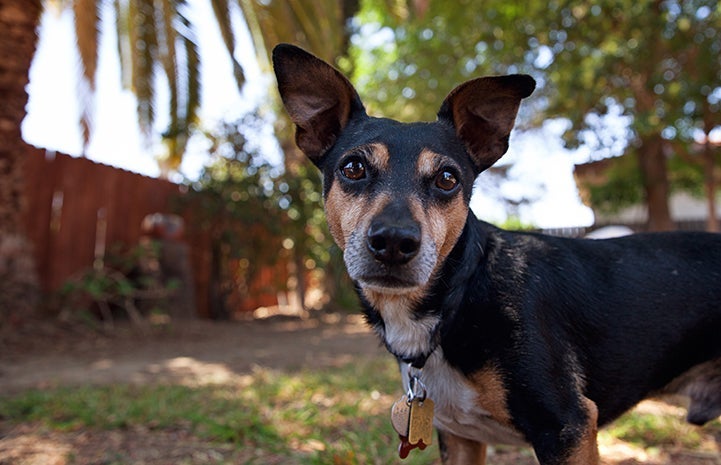
Lymphoma in Dogs: Signs, Stages, Treatment, and Prognosis
Lymphoma in dogs is a type of cancer that affects the white blood cells (called lymphocytes). Lymphocytes are an important part of a dog’s immune system, which protects the animal from infection. Lymphoma can involve many different organs in the body, but it most often affects those areas that are part of the immune system — such as the spleen, the bone marrow, and the lymph nodes. Learn about dog lymphoma, including its types and stages, signs, treatment methods, and life expectancy of a dog with lymphoma.
Dog lymphoma stages and prognosis
There are different forms of lymphoma in dogs, and they are named based on the areas or organs on which they have an impact. For example, cutaneous lymphoma affects the skin, gastrointestinal lymphoma affects the gastrointestinal tract, and multicentric lymphoma typically affects multiple lymph nodes.
In addition, there are multiple stages of lymphoma — stage I through stage V — based on what organs are affected and how many are involved, as well as sub-stages based on how the pet feels and how they're affected systemically.
When a dog is diagnosed with lymphoma, the prognosis will depend on several factors: the age and general health of the dog, the type and stage of lymphoma, and the types of treatment available.

Signs of lymphoma in dogs
The most common sign of the multicentric form of lymphoma is enlarged lymph nodes, commonly those located underneath the chin and on the back of the leg behind the “knee” of the dog. In some cases, multiple lymph nodes are enlarged. If there are enlarged lymph nodes in the chest of the dog, breathing difficulties or coughing can be observed. Other common signs of lymphoma in dogs are decreased or loss of appetite, lethargy, weight loss, and/or swelling of the face or legs. Also, sometimes the dog drinks and urinates excessively.

See how your community is doing
The skin form of lymphoma can initially appear as flaky, dry, red (and sometimes itchy) patches of skin anywhere on the body. As time goes by, the skin can look moist, ulcerated, very red, and thickened. Lesions might also appear in the mouth and on the gums, lips, and roof of the mouth.
Dogs with the gastrointestinal form of lymphoma usually have symptoms such as vomiting, watery diarrhea, and weight loss. The diarrhea can be dark in color and very foul-smelling.
Diagnosis of canine lymphoma
To diagnose canine lymphoma, the initial step is often a complete physical exam and a fine needle biopsy of the enlarged lymph node(s) submitted to a veterinary laboratory for analysis. In the case of a skin lesion, a skin biopsy can be submitted.
In addition, a complete blood count, chemistry profile, and urinalysis should be performed to identify abnormalities. Radiography of the chest and abdomen, plus abdominal ultrasound and/or a bone marrow biopsy, are also recommended to help determine the stage of the disease.
Lymphoma treatments: Chemotherapy, radiation, surgery
The most effective therapy for most kinds of canine lymphoma is chemotherapy. In some cases, surgery or radiation therapy are also recommended. There are numerous chemotherapy treatment protocols for dogs with lymphoma, and distinct types of lymphoma might be treated with different chemotherapy drugs.
Canine lymphoma has one of the highest remission rates of all types of cancers. In fact, as many as 80% or more of dogs can go into remission with conventional chemotherapy. Unfortunately, remission is not an actual cure, and most dogs who undergo chemotherapy will ultimately come out of remission after a period of time. Once the dog is out of remission, the cancer is more resistant to the chemotherapy drugs. And therefore with each fall out of remission, the drugs become less effective.
The steroid medication prednisone can be used to treat lymphoma as part of a chemotherapy drug protocol. Prednisone is also used on its own, without chemotherapy drugs, because some people don’t want to put their dog through the struggles of chemotherapy or can’t afford it. This treatment will also usually extend life expectancy but generally less than the combination chemotherapy protocols mentioned above.

Holistic treatments for dog lymphoma
There are other canine lymphoma treatment options available, such as holistic treatments. While research can sometimes be minimal, many holistic veterinarians believe that alternative treatments can be effective. Holistic treatments differ from conventional treatments in that holistic care helps fight the cancer by boosting the dog’s immune system to target cancer cells, whereas conventional chemotherapy targets the cancer cells directly.
Life expectancy of a dog with lymphoma
There are varying reports of the life expectancy of a dog with lymphoma after diagnosis. It depends on the type and stage of lymphoma, the dog’s overall health, and the dog’s age. Left untreated, most dogs will succumb to the disease within two or three months. With treatment, the average life expectancy is increased by 12 to 18 months — with some dogs surviving well beyond that to three or more years.
Please keep in mind that every dog is an individual, and these are only general guidelines based on statistics. If your dog has been diagnosed with lymphoma, the best course of action is to discuss it in detail with your veterinarian to determine all the available options, so you can arrive at a decision that is right for you and your pet.
